Every experienced gardener knows that if not to cover a climbing rose for the winter, then it can die, as this culture is very thermophilic. But first you need to properly prepare the bush, fertilize it well, trim. It is also worthwhile to figure out which material is better to use for organizing wintering.
Content
Bush preparation
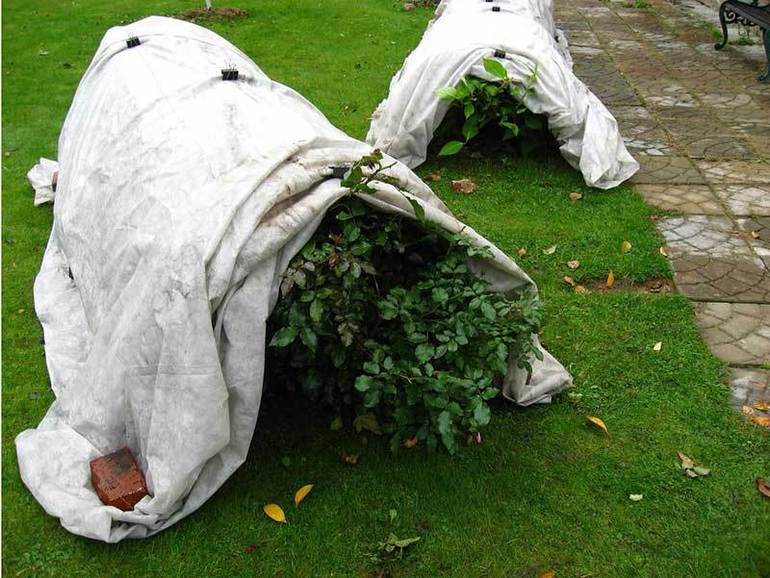
All preparatory measures taken are completely dependent on the climate of the region where the plant grows. Necessarily protect from frost frosty and hybrid varieties. It is especially important to do this if in winter the temperature drops below -15 degrees and remains at this level for a long time.
Preparation for pruned and shelter of climbing roses for the winter begins with the cessation of the introduction of nitrogen fertilizer. Usually they begin to do this in late August. If the bushes are provided with ground shelter, then the shoots must be removed from the trellis without fail, these manipulations must be performed a month before the freezing occurs. At the same time, a number of other events are being held, namely:
- At the end of August, fertilizers containing nitrogen additives are stopped. The substance stimulates the growth of new shoots, and this can weaken the flower. In addition, a plant in this state tolerates frosts worse. If during the inspection new shoots are found, then they should be removed with the help of a secateurs, otherwise the bush will simply freeze out.
- If the autumn top dressing contains potassium, then this significantly increases the frost resistance of the rose bush.
- After October, the buds are cut off, they are given time to bloom on their own and transform into a fruit. These berries help numb the bushes, respectively, in this state, the winter of climbing roses is more favorable.
- In September, they begin to reduce the number of watering procedures, this also helps to strengthen the stems. Watering is carried out only when the soil dries up, and as soon as the ground begins to freeze, these measures are completely stopped.
At the same time, sanitary pruning is carried out, dead, damaged and diseased shoots are removed from the plant. The main formation of the bush is carried out in late April - it is this time that is considered the most favorable for spring pruning.
Feeding Features
Root fertilizers are ideal for autumn top dressing. For the first contribution, a home-made composition is made, which includes the following components:
- water - 10 liters;
- superphosphate - 25 grams;
- potassium sulfate - 10 grams;
- boric acid - 2.5 grams (the substance can be replaced with ordinary brown, but already in the amount of 3.5 grams).
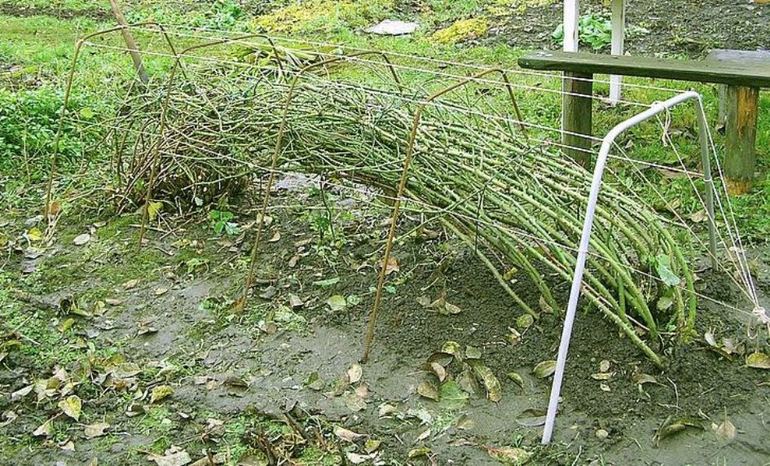
All components are mixed and thoroughly mixed, this amount is enough to process a plot of four square meters. The procedure is preferably carried out until mid-September. To prepare fertilizers for the second autumn top dressing you will need:
- water - 10 liters;
- superphosphate - 15 grams;
- potassium monophosphate - 15 grams.
It is worth noting that this composition must be used immediately after manufacture, otherwise it will simply expire and will not have the desired effect. As a rule, buckets of the mixture will be enough to process 3-4 adult shrubs. They feed in early October.
Excavation
Before you cover the climbing roses for the winter, you need to clean the area from weeds and other debris.These activities will help prevent pests and disease in the coming year.
To do this, the gardener needs to do the following:
- remove all broken branches, clippings, fallen flowers and leaves from the soil, weeds and other vegetation are also removed, that is, after work, the soil should be perfectly clean;
- if annuals grow near the shrub or there are wilted plants, then they also need to be disposed of;
- it is most convenient to remove plant debris and foliage with a rake.
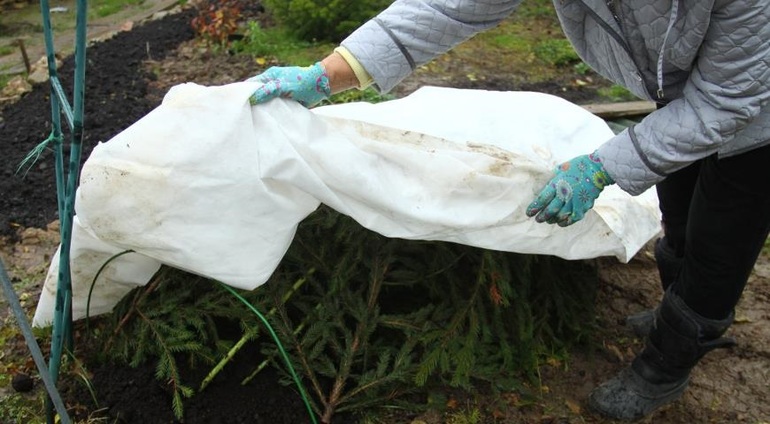
You can not leave faded buds on the site, as spores of fungi or other infections, such as black fungus, can be localized in them. They can become a breeding ground for insect larvae and other pathogenic microbes that simply migrate to a rose after wintering.
Therefore, all vegetation and garbage are necessarily removed from the site, and it is important not only to clean it, but to burn it. It is strictly forbidden to use this raw material as compost, as this material can spread diseases and harmful insects through the garden.
Trimming and Hilling Procedure
In the middle of November, when the ground has not yet been frozen, you need to cover the weaving roses for the winter a layer of well-drained land, it will be enough to pour 10−12 cm. In Ukraine, this time may come a little later. Moreover, to make such a mound is required for each individual bush. After that, you should cover the ground with a mulching layer, for this straw, shavings or pine branches are perfect.
Mulch will create an optimal temperature regime for root soil, and also reduce the risk of freezing. The next step is to trim, it is recommended to do this according to the following scheme:
- With the help of a pruner, pruning of dead branches is carried out, such shoots can be recognized by black color. Moreover, the elements are cut off at an angle of 45 degrees, you also need to leave about 3 centimeters above the kidney facing the outside of the branch.
- To ensure good air circulation and light tolerance, a plant needs to be thinned, for this, all incorrectly growing or crossed shoots are cut off. In addition, you should get rid of weak and subtle gains.
The cutting height directly depends on the variety of the rose bush. As for tea roses, they should be pruned quite strongly, but curly and weaving need an easy and gentle procedure. All these works are carried out before the frost, as the plant must adapt.
Shelter Methods

You can cover roses in different ways, but you need to take into account how the bush is located. If the landing was carried out in one row, then it is most rational to use a shield option. If plants are arranged in groups, then a special frame structure is mounted for them, in which flowers will winter.
If single shrubs are planted on the garden plot, then the type of shelter is selected individually, taking into account the climatic conditions of the region and the variety of roses. In winter, moderately frosty with a lot of snow, normal hilling and additional shelter in the form of a spruce are quite enough. In other cases, it is supposed to equip a small frame with an air gap.
Installation of shields
After the flowers are trimmed and untied from the supporting structure, they must be neatly tied and bent to the ground as much as possible. But before that, spruce spruce branches out on the surface. Shoots are fixed to the ground with a metal wire. Then, you need to build a kind of shields from boards or other suitable material.The width of these elements should be approximately 80 centimeters, and the length should be equal to the length of a row of shrubs.
The structure is installed along the plants in the form of a house, then it must be firmly and reliably fixed, wooden pegs can be used as fasteners. You can not worry if there are small gaps or openings in the shields, this is quite acceptable.
A plastic film is laid on top so that the sides are also closed, at the very bottom the film is covered with earth and fixed using planks. Before frost, polyethylene can be kept ajar.
Frame manufacturing
If rose bushes are not planted in rows, then frame structures are used as insulation for them, which can be quickly and easily assembled from any material at hand, whether it be metal wire or wooden battens.
If the plant is young and has not yet grown to large sizes, then you can insulate them with a conventional wooden box.
As in the previous method, first you need to cut the rose and remove it from the support, then fix the branches with additional props and ropes, but make it so that the plant does not come into contact with the frame.
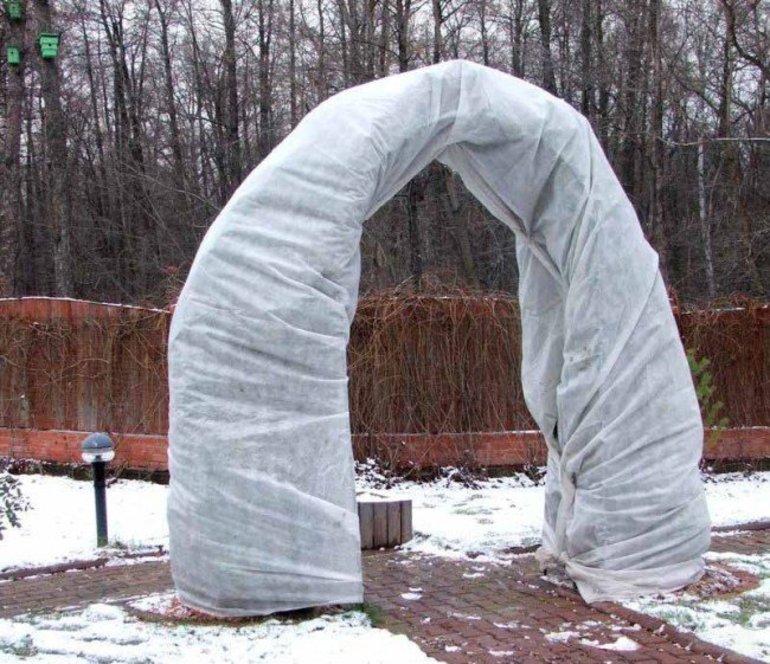
For the manufacture of frame structures used fiberglass. This material has moisture-proof properties, but at the same time it is perfectly breathable. And you can also apply a combination of dense non-woven material and a plastic film that will protect the artisanal rose from the rain.
Whatever type of shelter is used, it is important to remove it in a timely manner. This must be done gradually, daily lifting the material a few centimeters so that the plant does not spin, and the space can be ventilated. It is best to disassemble the shelter in cloudy weather, this will reduce the risk of sunburn.
Preparing climbing roses wintering is a very laborious work, but the process itself gives confidence that the plant will not freeze. So, with the onset of spring, surprisingly beautiful flowers with an incredible aroma will again appear on the shrub.


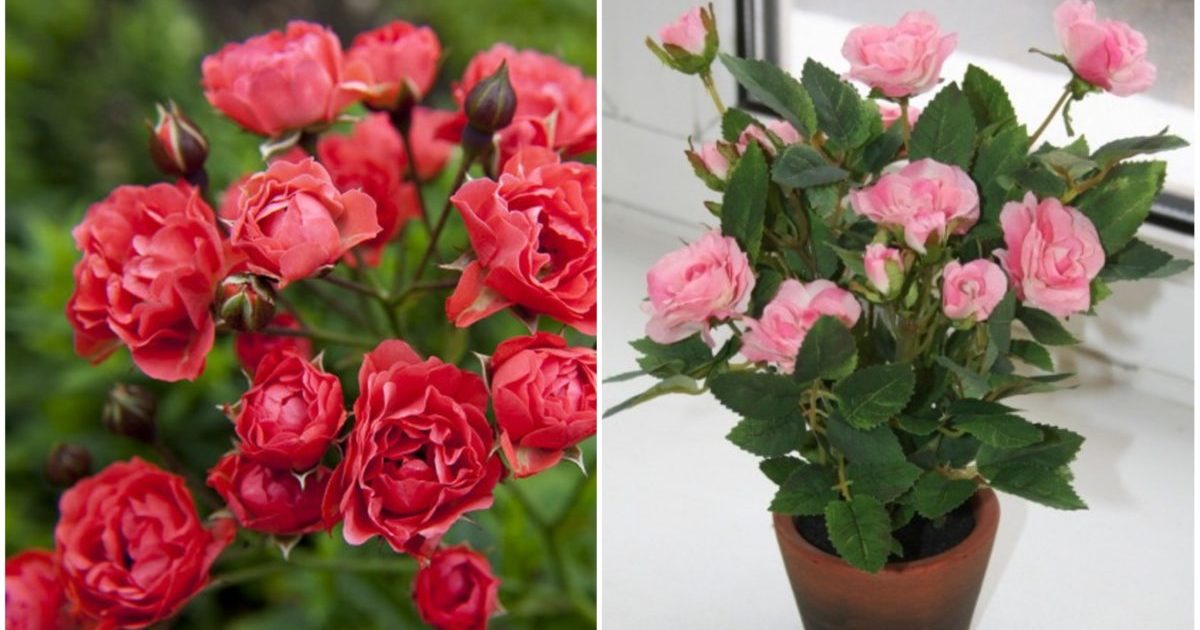
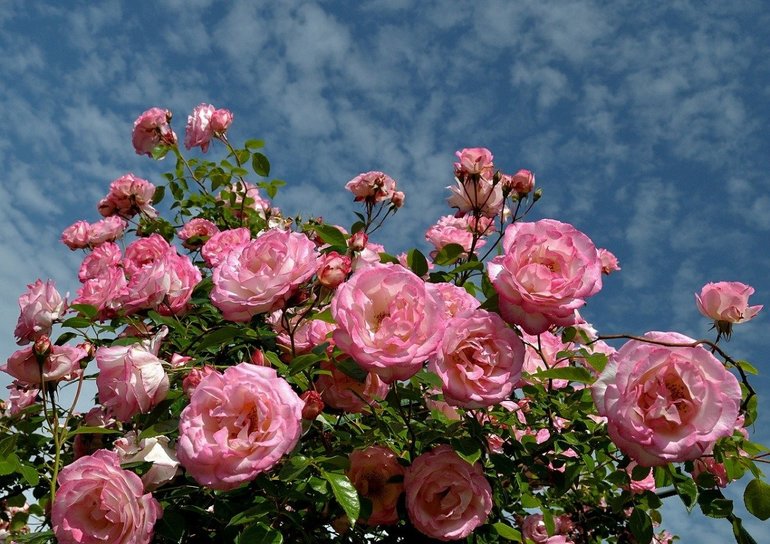
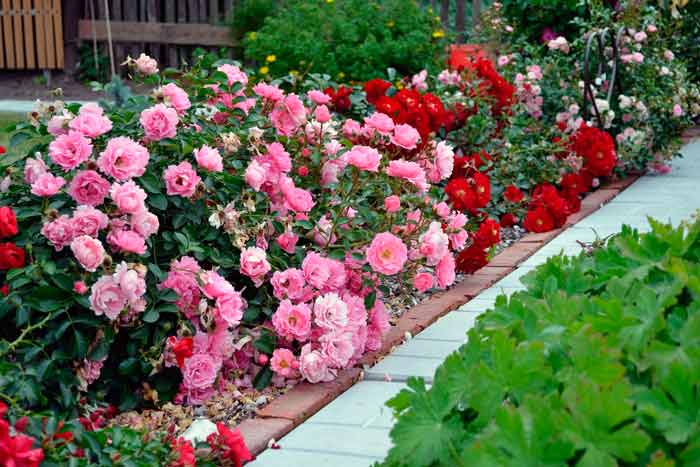 Shelter of roses for the winter: at what temperature does the robot hold
Shelter of roses for the winter: at what temperature does the robot hold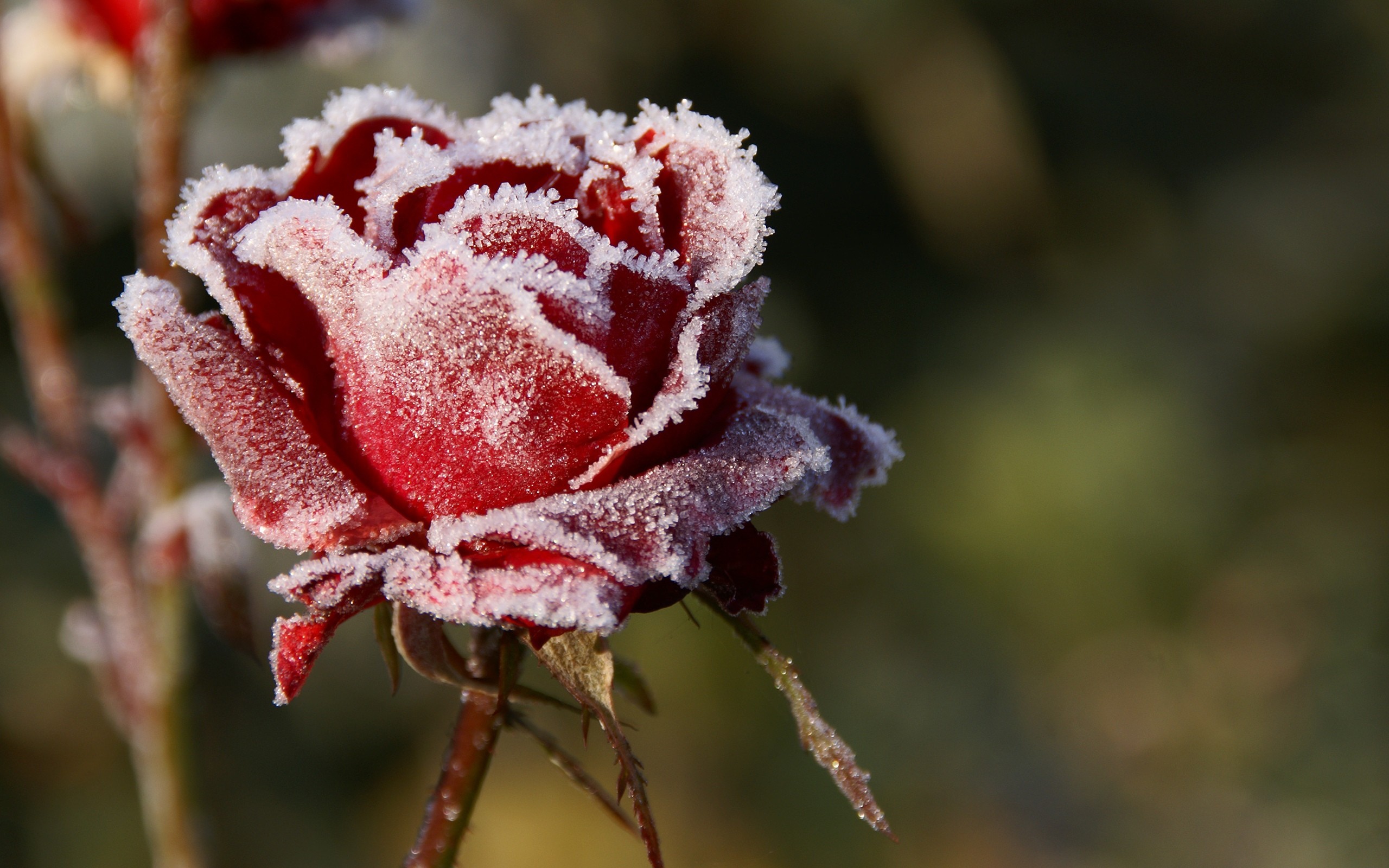 How to prune roses in the fall: timing, pruning rules, pros and cons
How to prune roses in the fall: timing, pruning rules, pros and cons What are the varieties and types of roses
What are the varieties and types of roses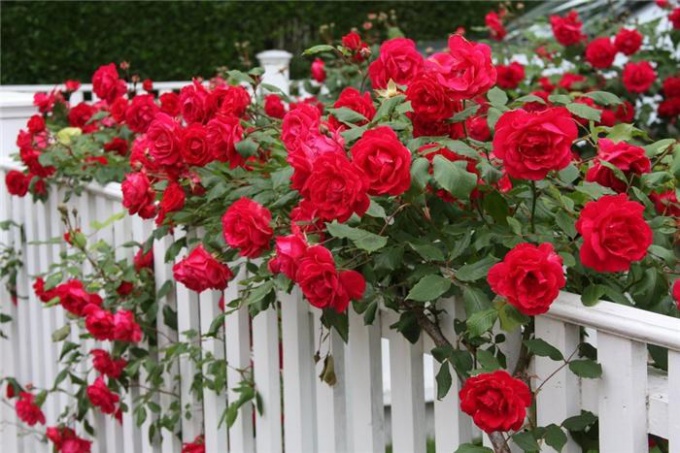 How to process roses with iron sulfate in autumn: proportions, advantages and disadvantages
How to process roses with iron sulfate in autumn: proportions, advantages and disadvantages